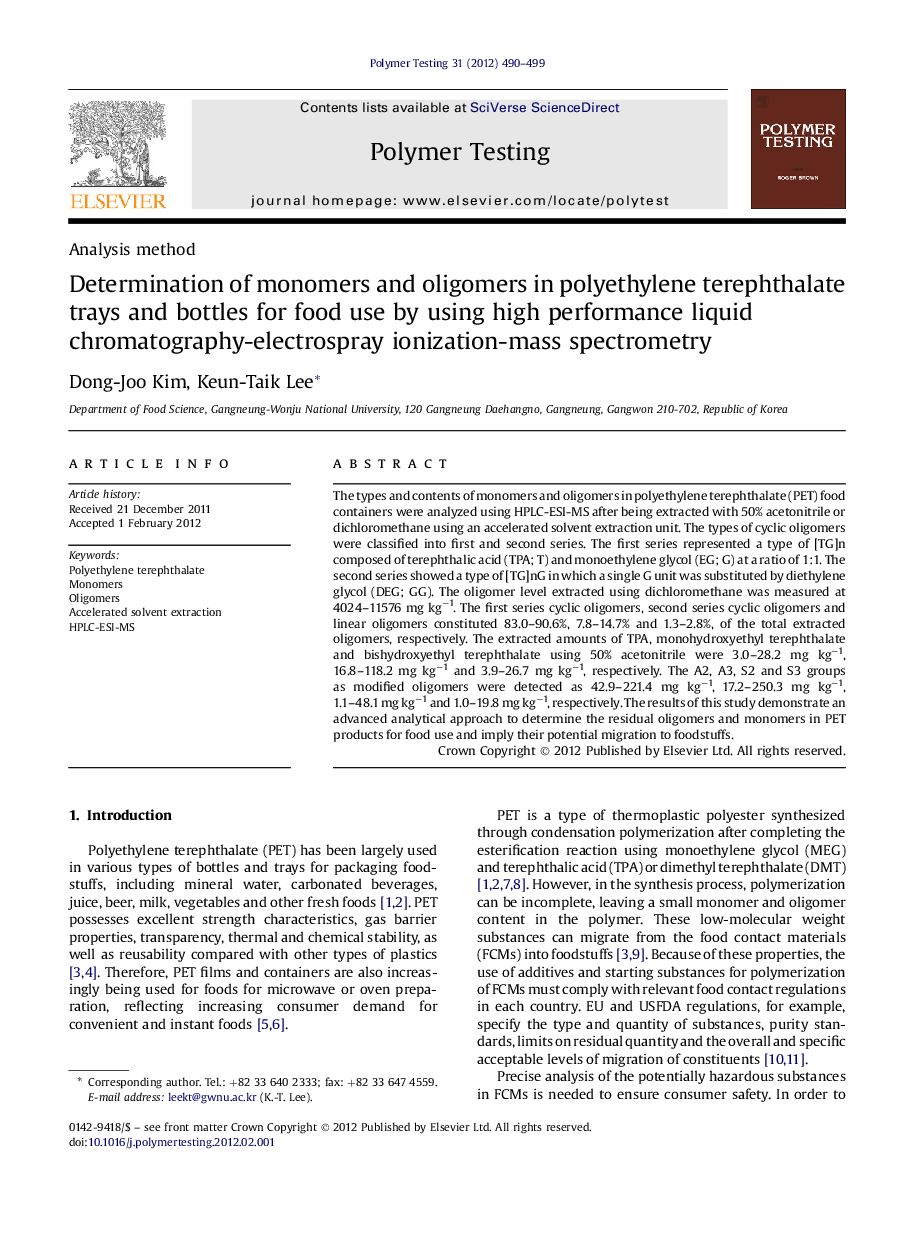| Article ID | Journal | Published Year | Pages | File Type |
|---|---|---|---|---|
| 5206750 | Polymer Testing | 2012 | 10 Pages |
Abstract
The types and contents of monomers and oligomers in polyethylene terephthalate (PET) food containers were analyzed using HPLC-ESI-MS after being extracted with 50% acetonitrile or dichloromethane using an accelerated solvent extraction unit. The types of cyclic oligomers were classified into first and second series. The first series represented a type of [TG]n composed of terephthalic acid (TPA; T) and monoethylene glycol (EG; G) at a ratio of 1:1. The second series showed a type of [TG]nG in which a single G unit was substituted by diethylene glycol (DEG; GG). The oligomer level extracted using dichloromethane was measured at 4024-11576 mg kgâ1. The first series cyclic oligomers, second series cyclic oligomers and linear oligomers constituted 83.0-90.6%, 7.8-14.7% and 1.3-2.8%, of the total extracted oligomers, respectively. The extracted amounts of TPA, monohydroxyethyl terephthalate and bishydroxyethyl terephthalate using 50% acetonitrile were 3.0-28.2 mg kgâ1, 16.8-118.2 mg kgâ1 and 3.9-26.7 mg kgâ1, respectively. The A2, A3, S2 and S3 groups as modified oligomers were detected as 42.9-221.4 mg kgâ1, 17.2-250.3 mg kgâ1, 1.1-48.1 mg kgâ1 and 1.0-19.8 mg kgâ1, respectively. The results of this study demonstrate an advanced analytical approach to determine the residual oligomers and monomers in PET products for food use and imply their potential migration to foodstuffs.
Related Topics
Physical Sciences and Engineering
Chemistry
Organic Chemistry
Authors
Dong-Joo Kim, Keun-Taik Lee,
